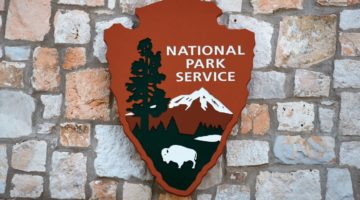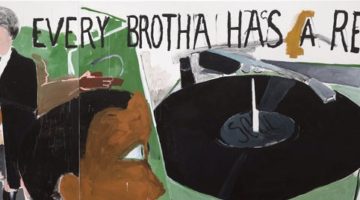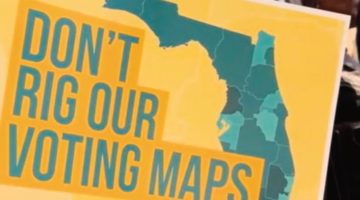The first Trump administration adopted family separation as a strategy to curtail migrant border crossing. Today, thousands of the separated children remain without their parents. STOCK PHOTO
Public outcry forced the Trump administration to end its family separation immigration policy on June 20, 2018. A task force which President Joe Biden established to reunite families found that about 5,000 children had been taken from their parents and about 1,400 had not yet been reunited with them, the Associated Press (AP) reported this October.
The American Civil Liberties Union (ACLU), which successfully sued the government, put the number of children higher – 5,500 – and said that 1,000 families were still not reunited with families. “Some little children have now spent nearly their entire lives without their parents,” Lee Gelernt, lead counsel in the ACLU lawsuit, told the AP.
And there is concern that former President Trump, who won re-election, will bring back some version of the policy to fulfil his campaign pledge to deport the estimated 11 million undocumented migrants in the country, many of whom have children who are citizens by birth under the Constitution. The Pew Research Center estimates their number at more than five million.
But the unconscionable separation of children from families did not start with Trump’s “zero tolerance” policy.
Many children of the million Africans enslaved between 1790 and 1865 were sold away from their families, according to the Equal Justice Initiative (EJI). “Roughly half of all enslaved people were separated from their spouses and parents; about one in four of those sold were children,” the EJI says on its website.
Also, many Indigenous children were forcibly placed in boarding schools to force them to “assimilate.” It got its start after Richard Pratt opened the Carlisle Indian School in Pennsylvania on Nov. 1, 1879, patterned after a program he developed as superintendent of the then Fort Marion Prison in St. Augustine, Florida. He explained his philosophy in an 1892 speech: “A great general has said that the only good Indian is a dead one. In a sense, I agree with the sentiment but only in this: that all the Indian there is in the race should be dead. Kill the Indian in him, save the man.”
Congress had previously passed the Civilization Fund Act and, evidently using Carlisle as a model, the Bureau of Indian Affairs opened a Native American Boarding School on the Yakima Indian Reservation in Washington in 1860. Over the next 150 years, around 60,000 children, some as young as 4, were removed from their families to some 357 schools in 37 states. The federal government paid more than $23.3 billion in today’s dollars over 98 years to implement the program, The Washington Post reported.
Around 900 children died while attending the schools where, according to an official study, at least 53 previously unknown burial sites were discovered.
Ten years ago, the EJI described the program as having been “rooted in racism and prejudice,” based on the assumption that a European American youth’s “moral character and habits are already formed and well-defined” after leaving school but an Indigenous one was “born a savage and raised in an atmosphere of superstition and ignorance.”
On arrival at the schools, the children “were bathed in kerosene, given military-style clothing in exchange for their traditional clothing and their hair would be shaved off for the boys and cut into short bob styles for the girls,” the Indigenous Foundation says on its website.
Indigenous composer-singer Peter LaFarge declared in his defiant 1964 song “Drums,” which Johnny Cash also sang, “Let me tell you Mr teacher who is going to make me right/In five hundred years of fighting not one Indian turned white.” But it created “generational trauma” that “continues to fuel high suicidal rates, drug abuse, alcoholism and poor parenting,” an Interior Department report said.
Many suffered from “mental health and other related issues such as anxiety, depression, low self-esteem, a lack of cultural identity, and the development of negative stereotypes (i.e. lazy, alcoholics, etc.), to name a few,” the Indigenous Foundation says. “These traumatic experiences have been passed down from generation to generation and continue to impact Indigenous communities today.”
The Post agreed, saying It was “a systematic effort by the federal government to destroy Native American culture, assimilate children into White culture and seize tribal land.”
Additionally, children were sexually abused in some schools which were run by the Catholic Church. At least 122 priests, sisters and brothers assigned to the schools since 1893 were later accused of sexually abusing the children in their care, The Post reported. Also, “for 91 consecutive years, 18 of the schools employed at least one credibly accused priest or brother, and the documented cases of abuse involved more than 1,000 children, mostly in the 1950s and 1960s,” in schools in remote regions of the Midwest and Pacific Northwest, including Alaska.
(Emily Kassie and Julian Brace Noisecat, who made the documentary “Sugarcane,” reported that newborns were burned alive in a trash incinerator at the St. Joseph’s Mission in Canada “to conceal evidence of systematic rape of students,” according to Variety.)
This stain on the nation’s history made the news recently when Biden visited Gila Crossing school near Phoenix, Ariz., on October 25 to “formally apologize … for what we did” and what “will always be a significant mark of shame, a blot on American history” and “a sin on our soul.”
Biden’s century-late apology came after The Post’s exposé and two reports from a study which Interior Secretary Deb Haaland ordered in June 2021. Haaland, a member of the Laguna Pueblo in New Mexico, served in Congress from 2019 to 2021, when Biden appointed her the first Indigenous Cabinet member. Her grandparents and great-grandfather were among those taken from their families and placed in the schools.
While in Congress, Haaland introduced legislation to create a commission to investigate and document what happened at the schools. The bill, which was not taken up, was reintroduced in the Senate in 2023 but has stalled there as well.
(That has happened also to a draft “Commission to Study and Develop Reparation Proposals for AfricanAmericans Act” which the late Michigan Democratic Rep. John Conyers introduced – 35 years ago.)
Haaland’s commission proposed several recommendations, including calling for an apology, and the administration has said it “expects to roll out a new ten-year Native Language Strategy by the end of 2024.”
Colonizers tried to force the “assimilation” of Indigenous children in other countries also but, unlike the U.S., some agreed to pay compensation. Canada will pay $31.5 billion for its program involving around 150,000 First Nations children. In 2015, it established a Truth and Reconciliation Commission – similar to what Nelson Mandela established at the end of apartheid in South Africa – and deemed the assimilation program a form of “cultural genocide.”
New Zealand will pay $2.24 billion for its program starting in 1840 that sent Māori children to boarding schools. They were originally taught in their native te reo Māori but the government subsequently required that the schools teach in English in order to receive subsidies. By 1960, only 26 percent of the children could speak their language.
Australia will pay $280 million for its program involving 100,000 children that was started in the 1700s. A 1997 official inquiry had offered 54 recommendations, including an apology and reparations, and a year later the government organized the first National Sorry Day.
Denmark will pay $37,200 to each of six survivors of the 22 Inuit children aged 5 to 8 who were taken from their families in 1951 from Greenland – then a colony of Denmark — “as part of an experiment to create a Danish-speaking elite,” Agence France-Presse reported.
In Norway, the parliament apologized to the Sami, Kvens and Forest Finns for its “Norwegianization” policy which began in the 18th century and became official from 1851 to the 1980s, The Guardian reported. The apology followed the report of a truth and reconciliation commission.
As for slavery, the U.S. House passed a resolution of apology on July 29, 2008. The Senate followed on June 18, 2009, apologizing for the "fundamental injustice, cruelty, brutality, and inhumanity of slavery" but specifically barring moves towards reparations.













No Comment